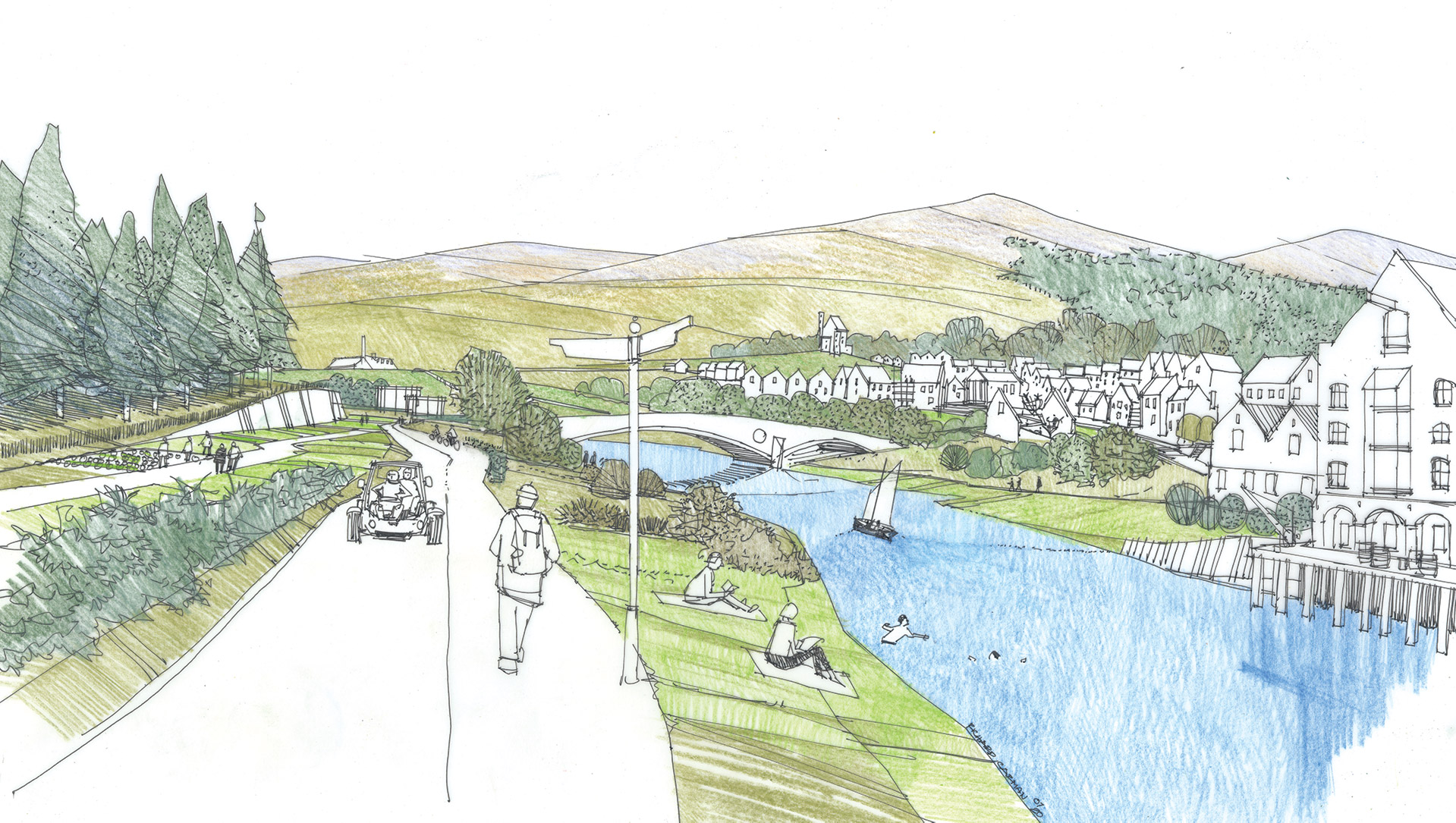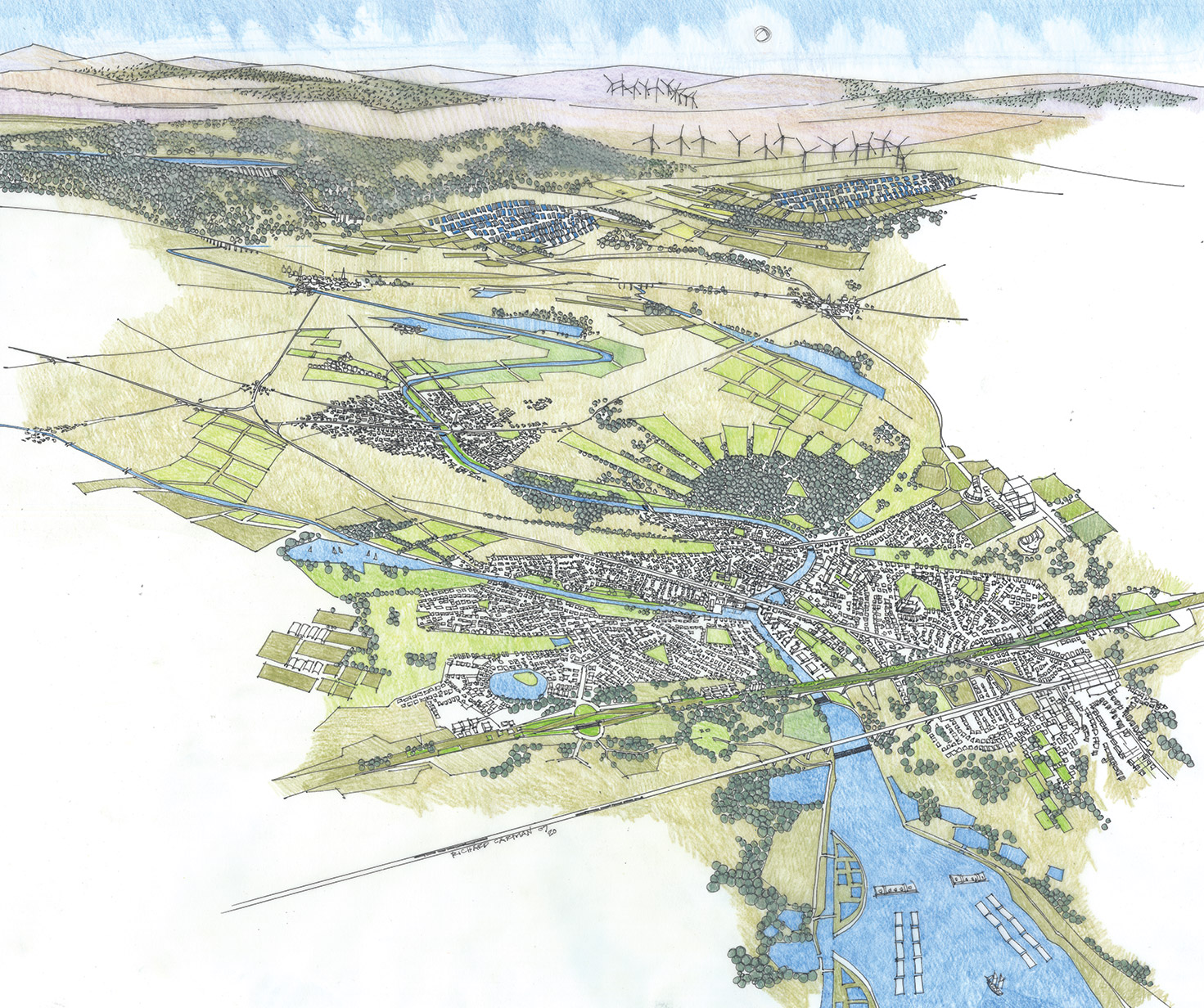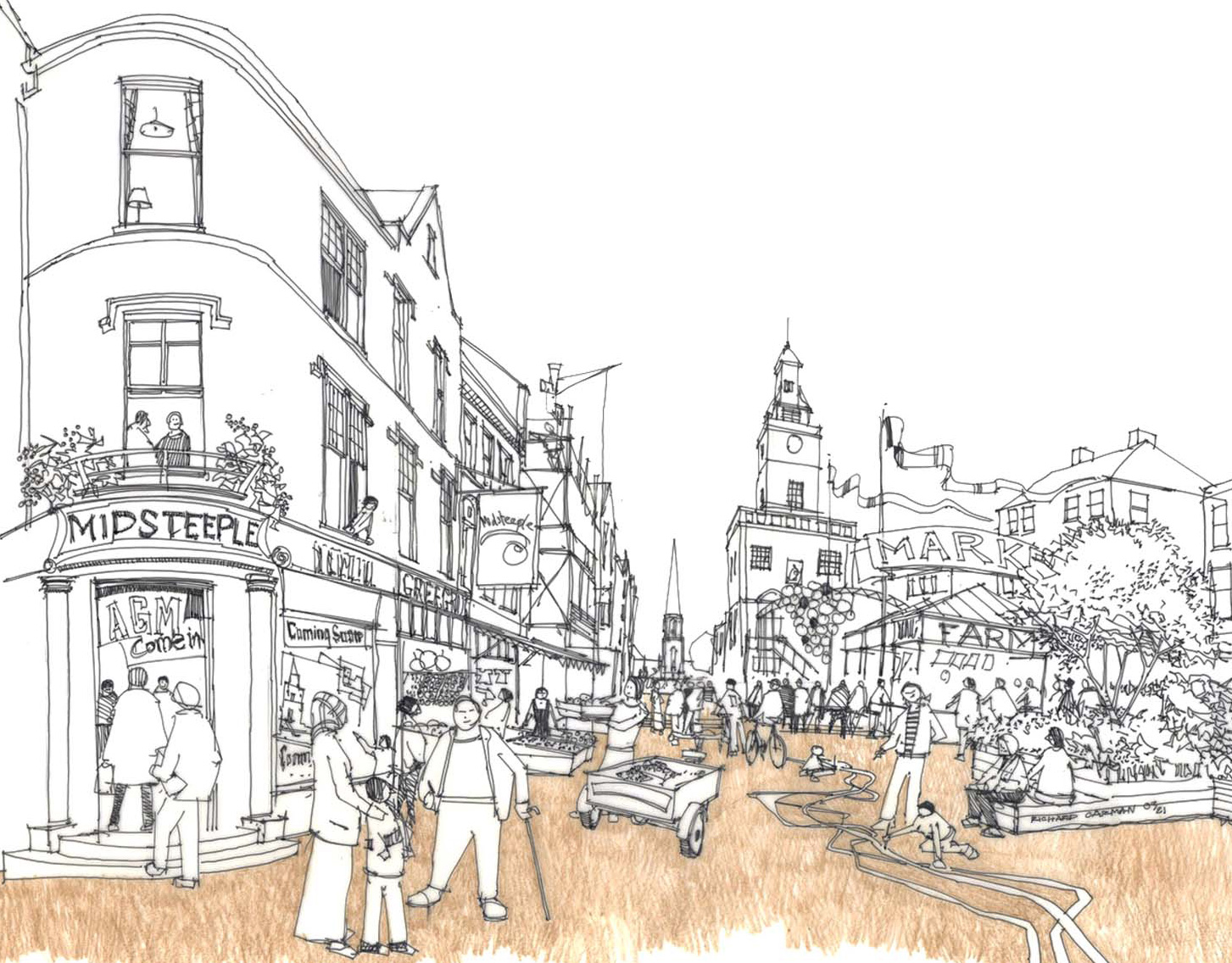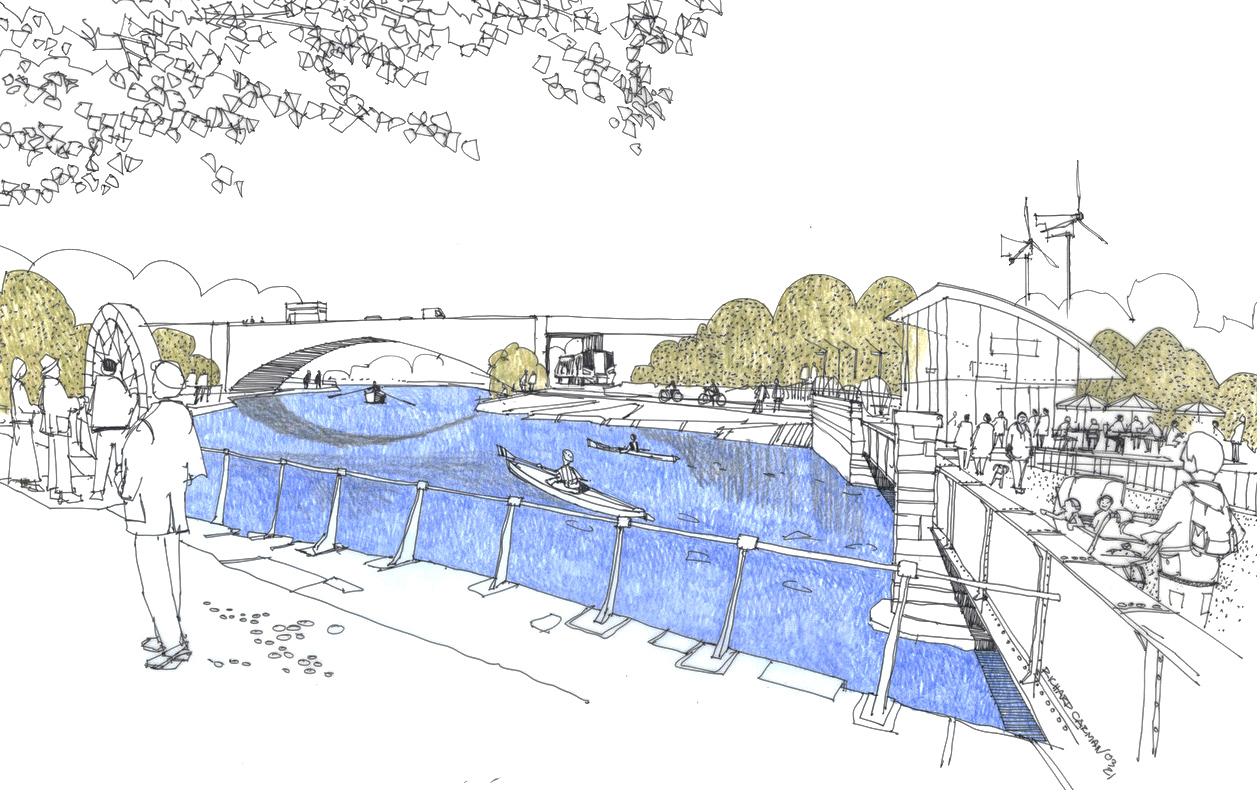Carbon conscious towns in Scotland
Learn how two Scottish towns are using the eight principles of a carbon conscious place to reduce, repurpose and absorb carbon.

The eight principles of a carbon conscious place are the backbone of our work with communities who are designing for a changing climate.
The principles support a holistic approach to designing and adapting places to reduce, repurpose and absorb carbon.
This case study focuses on two Scottish towns that are already working to deliver on the principles: Dumfries and Leven.
The narrative and illustrations are designed to inspire others. They give some insight into the approaches being applied and a visual glimpse of possible outcomes.
What this case study covers:
Why the focus on towns?
More than half of Scotland’s population live in towns. That means it is essential local authorities and communities are empowered to respond and adapt to the impacts of climate change.
But every town has its own unique set of circumstances, demographics, and geography. There is no one-size-fits-all approach for adapting to climate change.
Some of the issues our towns need to act on:
-
Reducing and balancing carbon emissions associated with our heat and energy
-
Supporting behaviour change to tackle the emissions associated with all other aspects of our daily lives
-
Adapting to the risk and impacts of climate change
Challenges many towns face:
- Limited access to affordable and reliable public transport
-
Fewer people visiting town centres
-
Vehicles dominating the streets
-
Poor energy efficiency
-
Increasing flood risk

The eight principles of a carbon conscious place
The eight principles of a carbon conscious place support a holistic approach to designing and adapting places to reduce, repurpose and absorb carbon. They outline important concepts to consider when planning and developing places. Follow the link below to:
- learn more about the principles
- see each of them action
- explore visions of Scotland in 2050 that the principles inform

Dumfries
Dumfries is a market town in south-west Scotland. Here several community initiatives have given new life to the town centre.
For years, national companies occupied shop units in the town centre. They left upper floors vacant to the point that few people now live in the centre.
Midsteeple Quarter
Taking over a vacant shop unit in 2011, community benefit society Midsteeple Quarter held discussions around the future of the town.
A consensus emerged that bringing people back to live in the town centre would be important for the economic and social future of Dumfries. Midsteeple Quarter took on the development of one high street block into flats and enterprises.
The Crichton
The Crichton is an 85-acre estate home to academic institutions, hotels and businesses. It is managed since 1996 by The Crichton Trust, a charitable company.
Its Care Campus is an initiative that grew out of discussions about supporting an ageing population. It is a place where different generations can live together.
The principles in Dumfries
The Midsteeple Quarter was set up to build and deliver a town centre where locals want to be.
The Crichton Trust is developing the Crichton Care Campus by engaging with the local community. The project aims to go beyond just needs and to address local desires.
The premise of the Midsteeple Quarter is about bringing people back to live in the town centre. This accompanies creating space for local businesses and shops.
The Midsteeple Quarter is acting on the premise that investing essential services in easily accessible areas is key. If the town centre becomes the go-to place, then it is much easier and more feasible to invest in transport networks.
A large hill between Dumfries town centre and the Crichton campus makes active travel tricky. But the trust is encouraging tenants to use low-carbon transport by fitted e-bike charging points in the bike shed.
The Stove Network and Midsteeple Quarter believe consultation is critical. They are keen to keep consulting with the local population to ensure ongoing effectiveness and relevance.
Spaces in community-owned buildings are used for engagement and consultation work. These offer locals the opportunity to get involved with developing designs for Dumfries’ future.
The Crichton Trust is looking at building in circular economy procurement and specifying local suppliers for any refurbishment or re-purposing work.
The Midsteeple Quarter is turning dilapidated high-street properties into incubator spaces.
Dumfries sits on a hot water reserve. Energy consultants have done a feasibility study for a low temperature district heating system that could supply the Midsteeple Quarter.
The Crichton Trust is developing a waste-to-heat plant, which will be used to heat the new co-working space.
Sharing is integral to The Crichton’s success. It is home to, and shared by, academic institutions, Dumfries and Galloway Council, the NHS, and businesses.
The Midsteeple Quarter is a community benefit society, which means that all members are part-owners in the project.
As a registered charity independently managing a large asset, The Crichton Trust is in the unique position of being able to make and implement long-term plans.
With a 30-year strategic plan, the trust can take the long view. This enables it to justify its focus on future issues such as technology, zero carbon and an aging population.

Leven
Leven is a former industrial centre on the east coast in Levenmouth, Fife. Here a partnership with Scottish Government has improved the environment around the River Leven.
The Leven Programme was set up in 2018 to bring together public bodies, businesses and the community to improve the river and the surrounding area by:
- improving the physical and ecological conditions
- creating better access to the river and between communities
- improving people’s health, well-being and economic prospects
The principles in Leven
The Leven Programme is committed improve the environment and lives of those living and working within the Leven catchment area.
It aims to improve access to the river and access between communities. This will help to breathe new life into the area and make it a great place to live, work and visit.
The Leven Programme is creating a 5km network of paths and cycle ways along the river. It will eventually extend a further 20km.
The paths will connect isolated communities along the river, and connect people to jobs, training, town centres, and to each other.
The Levenmouth Together initiative was launched in 2019 to develop a community-led approach to economic development.
It is designed to inspire the community to become more enterprising and take ownership of local events and initiatives. It aims to instil community spirit and a sense of purpose for individuals and the community.
The Scottish Environment Protection Agency and Fife Council are working together to better understand how derelict land could be brought back into productive use.
Another local project is looking at four possible locations for Leven station along the reinstated railway line. All options look to reuse former industrial sites.
The Leven Green Network works to get communities interested in local wildlife and biodiversity. It also aims to improve physical and mental health by creating easier access to the green network.
School workshops about the river, a citizen science project, and guided wildlife walks are creating connections with the community.
The Leven Programme is actively sharing lessons from the project to show how organisations can work together to develop strategies, projects and a place-led approach.
The Scottish Environment Protection Agency and local organisations are sharing resources and knowledge to improve the River Leven and its surrounding area.

Our work with small towns
We are working with local communities to support place-based climate action in a network of small Scottish towns.
And we are using this work to develop learning that can be applied in places across Scotland. Read more about our Climate Action Towns project.
Image credits: Richard Carman
Share your place-based climate action
We would like to hear from communities and local authorities who are creating carbon conscious places. If you are designing and adapting a place to reduce, repurpose and absorb carbon, please share examples of your work with us.
